ALSACE VOSGES - Col du Wettstein - Schratzmännele
Year of visit: 2004, 2007, 2008, 2009
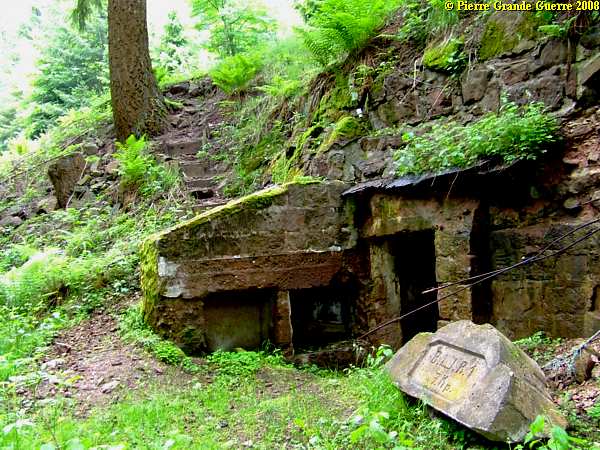
In the next three photo impressions we visit the front sector of the Lingekopf or le Linge, battlefields of high and steep slopes from 19 February until 13 October 1915. We will visit it's sub summits and mountain passes, to start off on this page with the Col du Wettstein and the Schratzmännele.
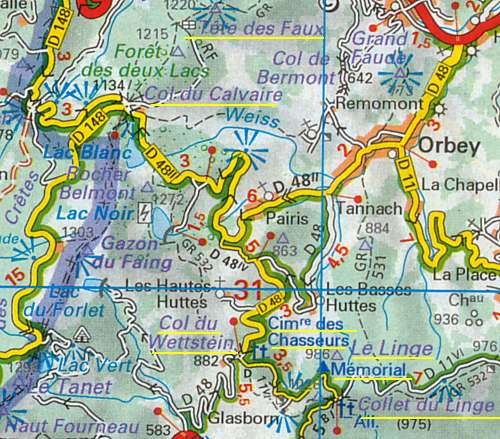
From the Col du Calvaire we follow the D 48 ll, southward, to the Col du Wettstein. In 2009 we made first a stop at the beautiful Lac Noir .
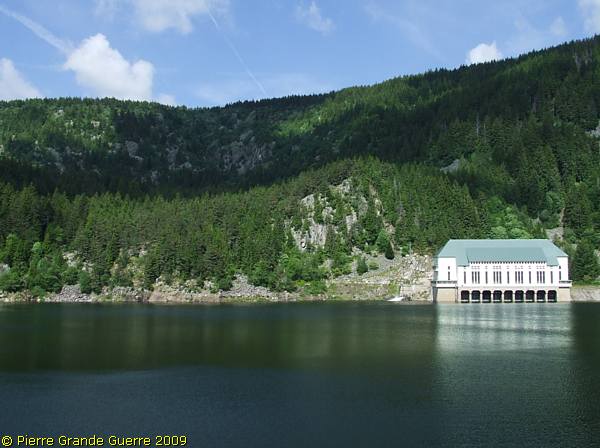
Since the 30-ties of the XXth century the lake with it's dam produces "green", electricity power.
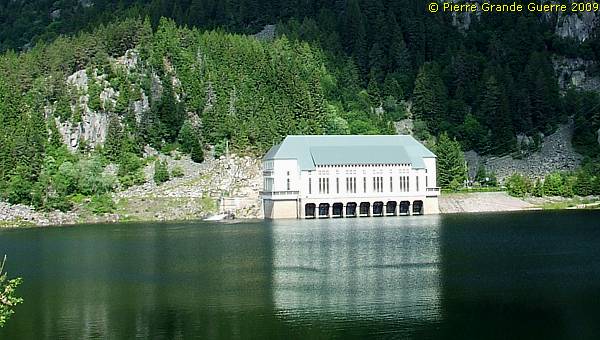
From 1914 the surroundings of the lake formed the French Divisional Headquarters of this front sector.
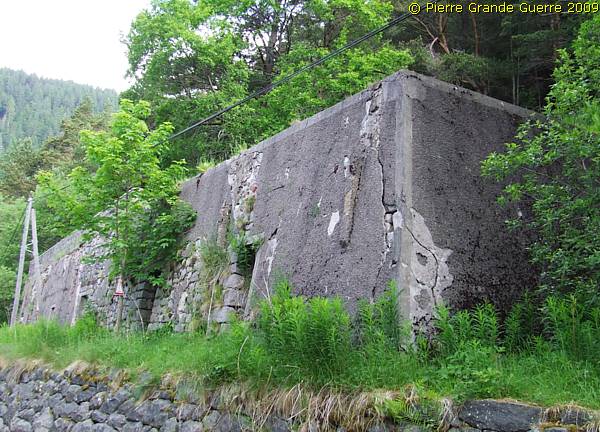
North, at the bank of the lake, stood this 1916 Command Post, annex dressing station, and shelter. The accesses into the slope were filled in with rocks. Unfortunately for us the French authorities decided that this bunker had to be demolished in September 2009. In June 2010 I did find on this spot an empty place and only a sign, announcing this demolition! This bunker does not exist anymore!
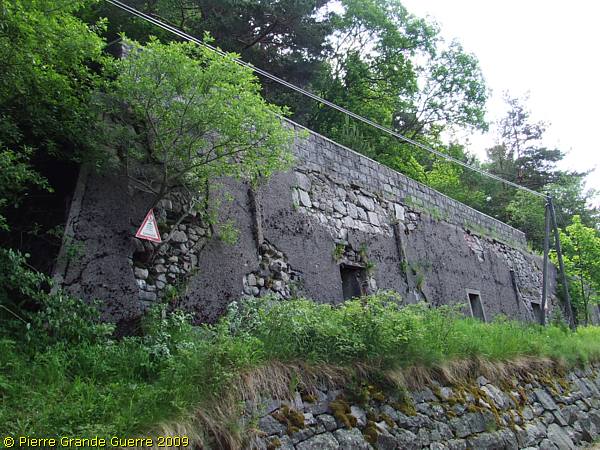
We continue southward, ...
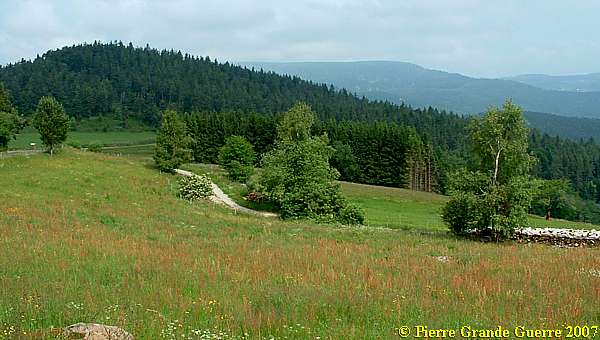
... and arrive at the Col du Wettstein (882 m).
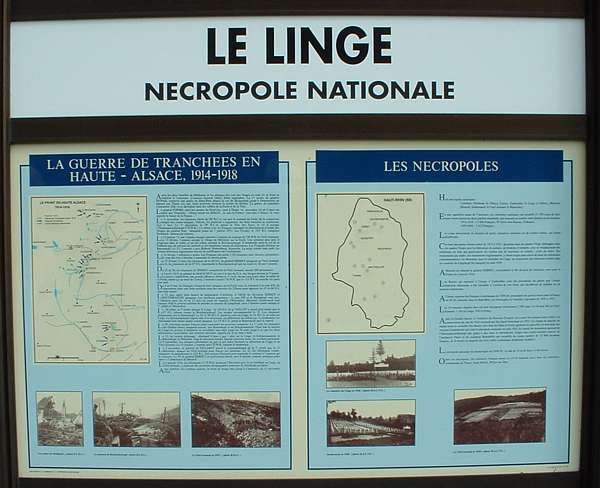
At the eastern side of the road lies the French Nécropole Nationale le Linge
, ...
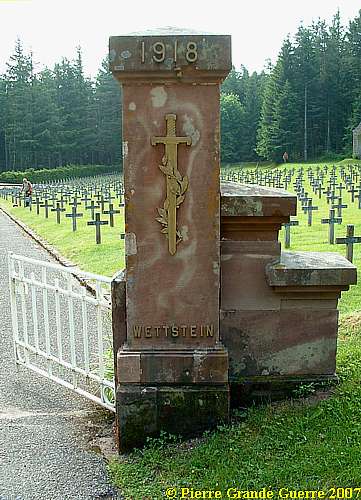
.... also known as the Cimetière des Chasseurs
, or the Cimetière du Col du Wettstein
.
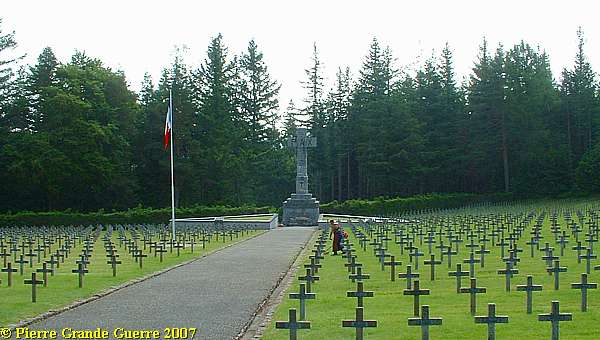
The cemetery at the Col du Wettstein contains burials of 2,201 soldiers, mostly Chasseurs Alpins and Chasseurs à Pied, and of 1,334 soldiers in 2 ossuairies.
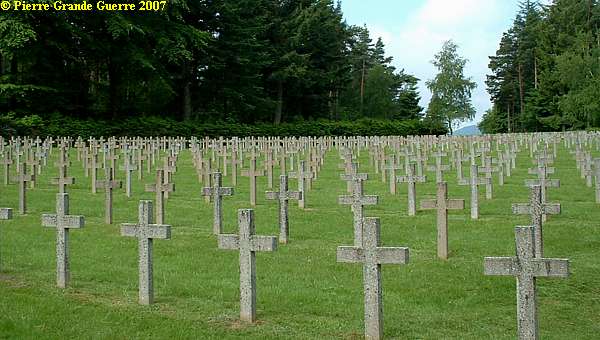
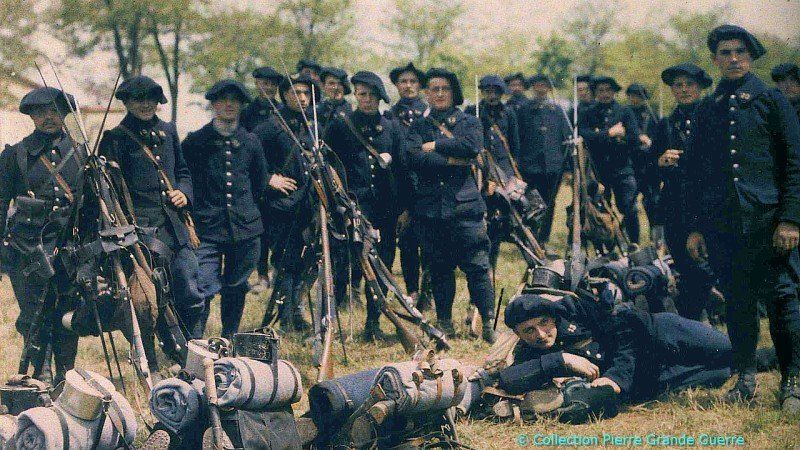
At the base of the French Cross of Sacrifice we find an impressive bronze sculpture of a killed Chasseur.
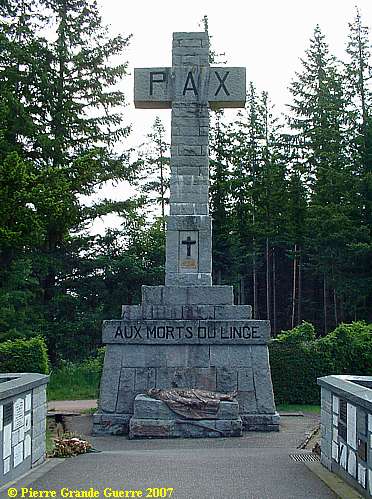
Notice the winter outfit, indicating the harsh circumstances for these soldiers during the winters in these mountains.


The Red Devils was the nickname of the 152e R.I. The Blue Devils was the nickname of the Chasseurs Alpins.
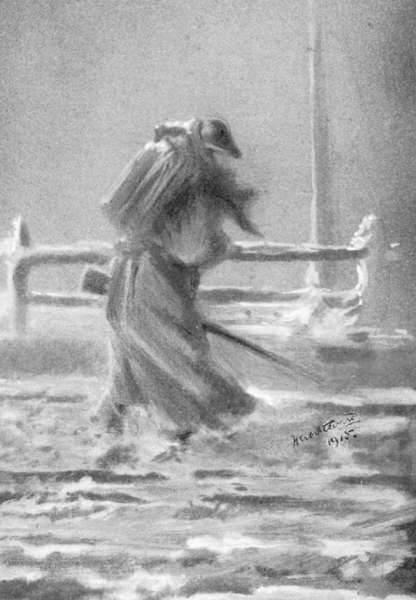
The Battles in the Lingekopf Front Sector - 1915
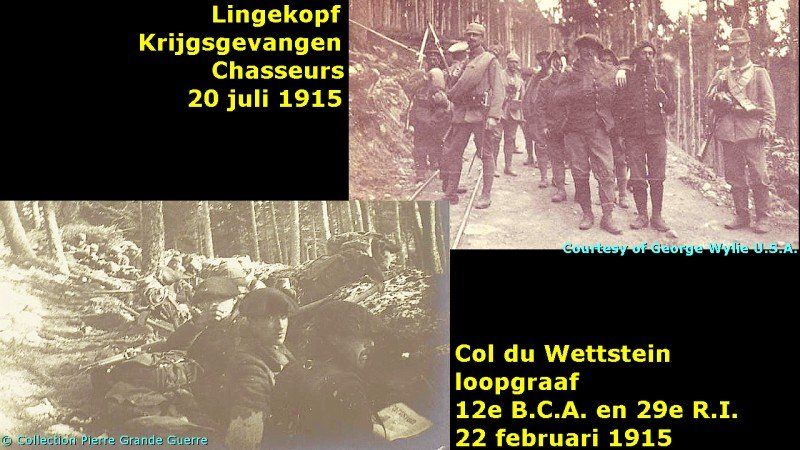
The French planned to attack the summits of le Linge or Lingekopf in March 1915. The Germans however attacked first on 19 Februari 1915 at the sub summits of le Linge, like the Kleinkopf , the Barrenkopf , and the Schratzmännele.
During a heavy snow storm the Germans could only reach the Barrenkopf and the Schratzmännele. The French kept their positions at le Hurlin and near Glasborn.
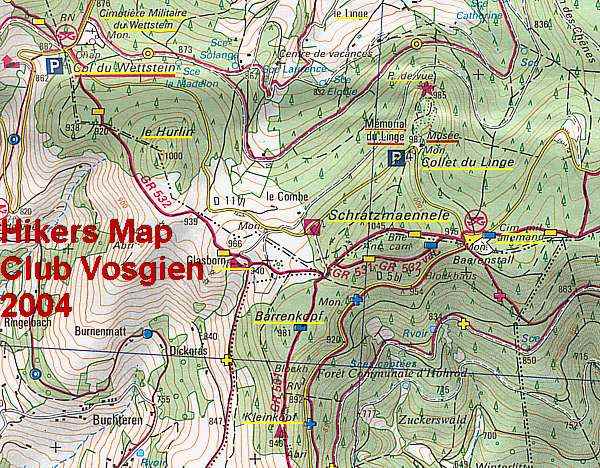
On 20 July after an artillery bombardment of 10 hours the French, Chasseurs à Pied, Chasseurs Alpins, and Infantry Regiments attacked the Barrenkopf, the Schratzmännele, and the Collet du Linge without success. They lost the grounds after a fierce German counter attack. After renewed attacks and counter-attacks from 22 July, the French succeeded to capture the Barrenkopf and the Schratzmännele on the 29th.
For still incomprehensible reasons the French were ordered to leave their positions at these summits.
On 31 August the Germans re-occupied the summits again with gas attacks, leaving the lower western slopes to the French.
From August until 13 October 1915 the attacks and counter-attacks would go on without much gain for both parties.
Visit my next page
on this site for more historical details.
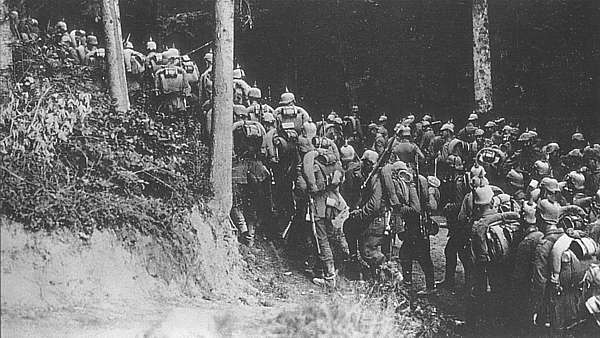
We continue to take a look at a triangular shaped mass grave of 720 soldiers and officers of Bataillons Chasseurs Alpins.
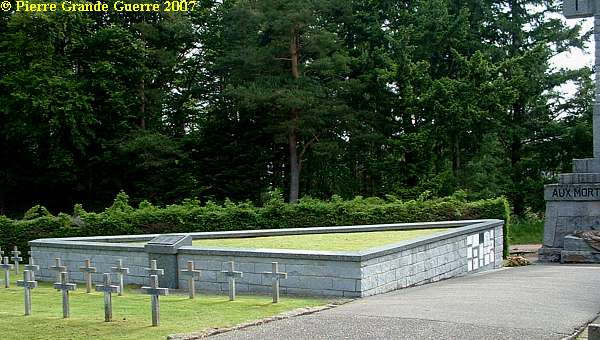
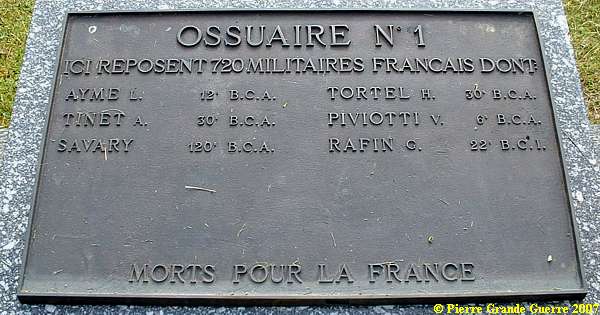
"Ossuary no. 2." contains the mortal remains of 615 soldiers.
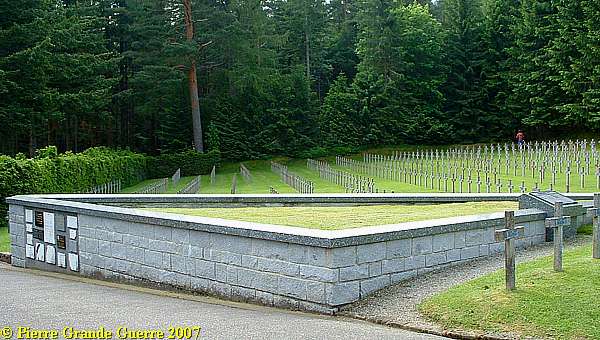
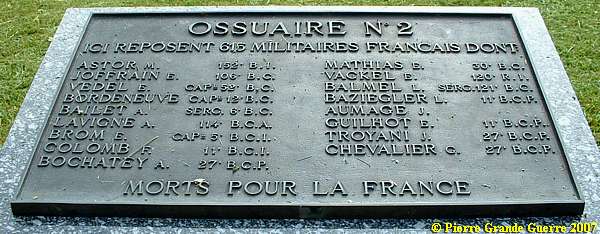
After our visit to the cemetery we take the D 11vi to visit a memorial near le Combe.
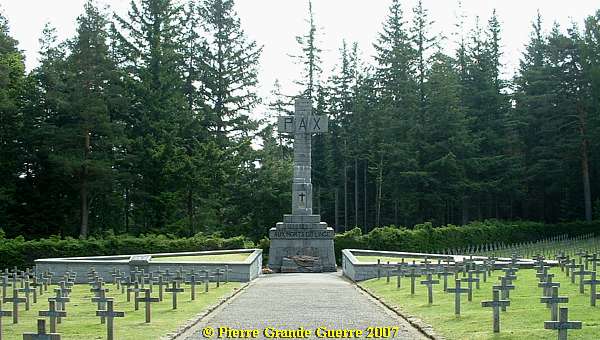
Next we arrive at the height of the Glasborn .
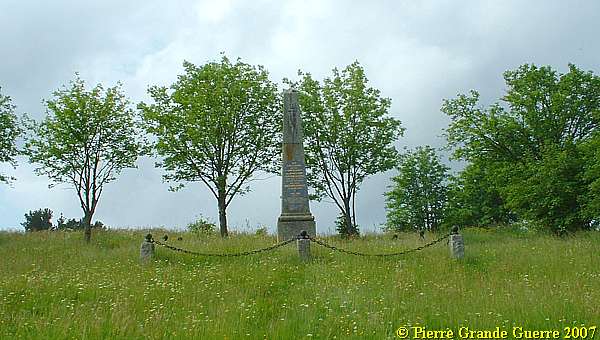
This "Monument des Chasseurs" at the height of Glasborn commemorates:
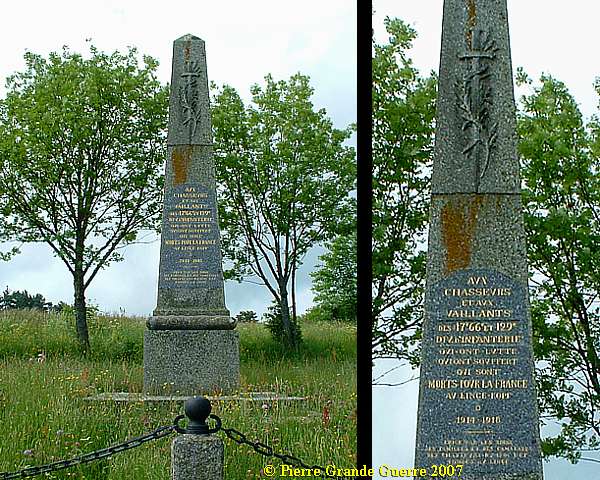
View from the memorial eastward.
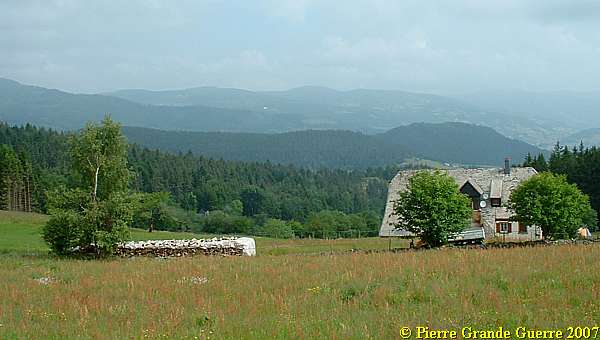
We continue to a northern slope of the Schratzmännele, where we find in the verge of the road a white cross, reminding of a recently exhumed body of a 19 years old Chasseur Alpin, who fell here on 4 August 1915.

We arrive at the Collet du Linge near the summit of the Schratzmännele. Next to the memorial stands another white cross commemorating the recent exhumation of a French soldier.
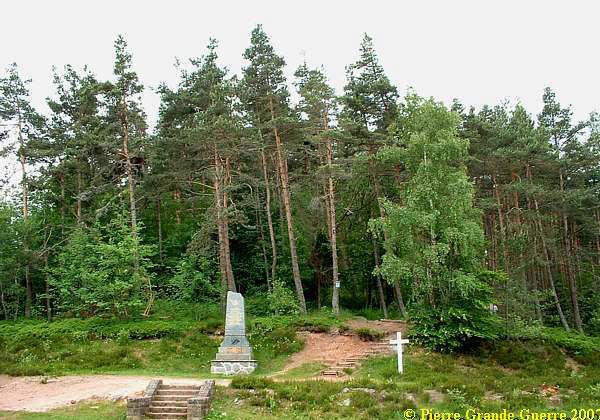
The inscription on the memorial dedicated to the 5e Bataillon Chasseurs à Pied tells us:
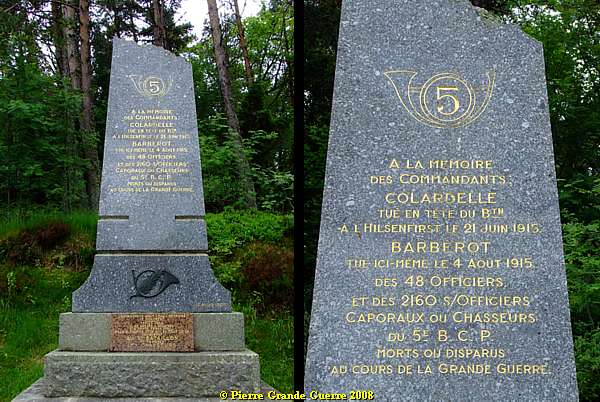
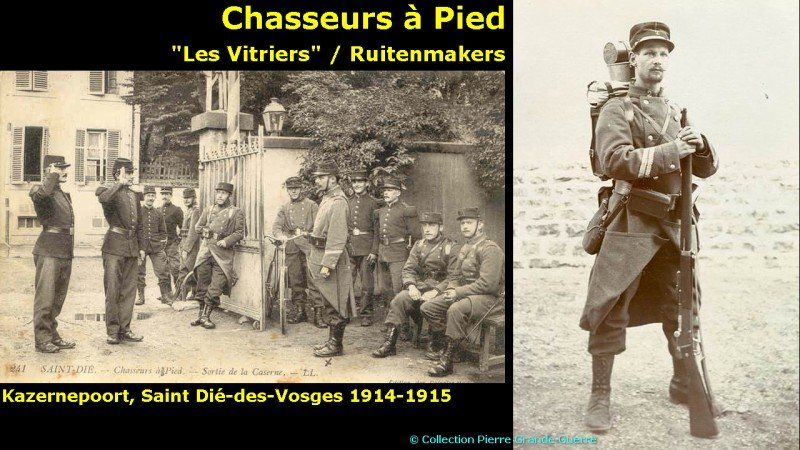
German relics on the Schratzmännele

In 2008, on a foggy day in June, we climbed the Schratzmännele, looking for relics of the German positions along the summit. After 90 years nature took over with a dense vegetation of ferns and mosses. Almost always the Schratzmännele shared it's battles of 1914 and 1915 with the nearby ridge of the Lingekopf.
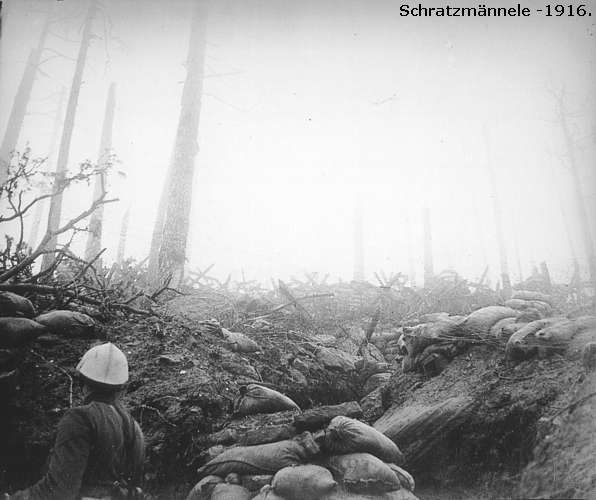
I will later explain in more details, what happened at the Schratzmännele and the Lingekopf in the next chapter about the Linge and it's Collet du Linge. For now I try to show you around on the "German" side of the mountain, and give you sometimes some details about particular fights on this ridge.

On one of the lower, but still steep slopes of the Schratz ...
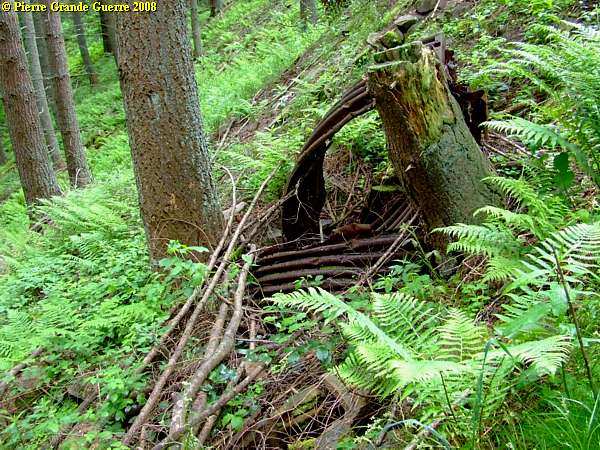
... I found this remarkably well preserved Bavarian Command Post Bunker.

The bunker has been built in 1916 by 7th Company of the Bavarian Landwehr Infantry Regiment 1.
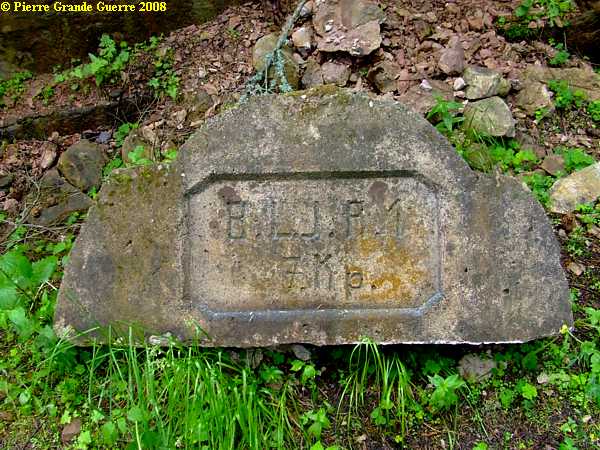
I went inside the twin bunker. From both entrances: the left and the right room.
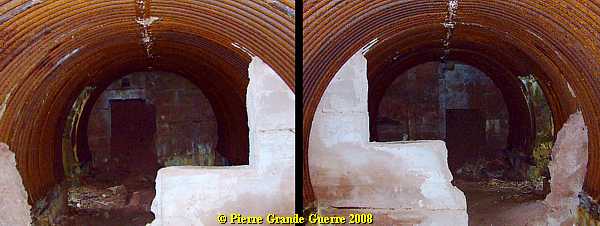
Notice the electric wires and telephone cables on the photo of my late wife Chris (08-05-2018), co-founder of this website.
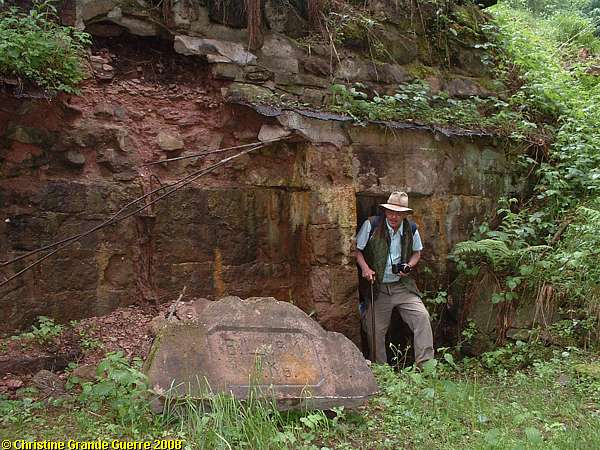
The slope is too steep to photograph the whole front at once.
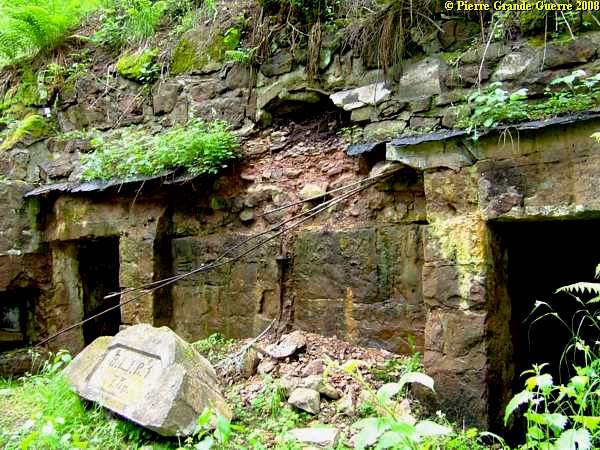
Even this china electricity cap is still in tact.

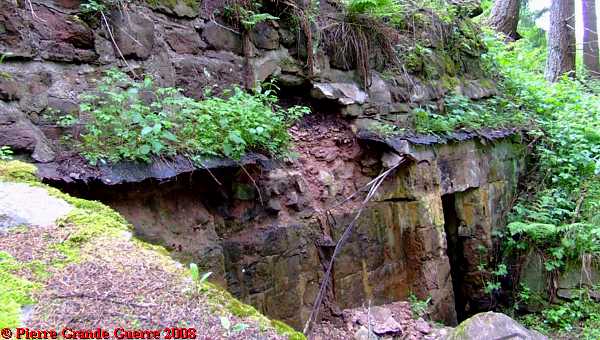
Years later: Sgt. Maj. Spikey and your website manager at the same Command Post bunker on 20 September 2018. Notice that the stone with the B.L.I.R. 1 inscription has been placed in its original position.
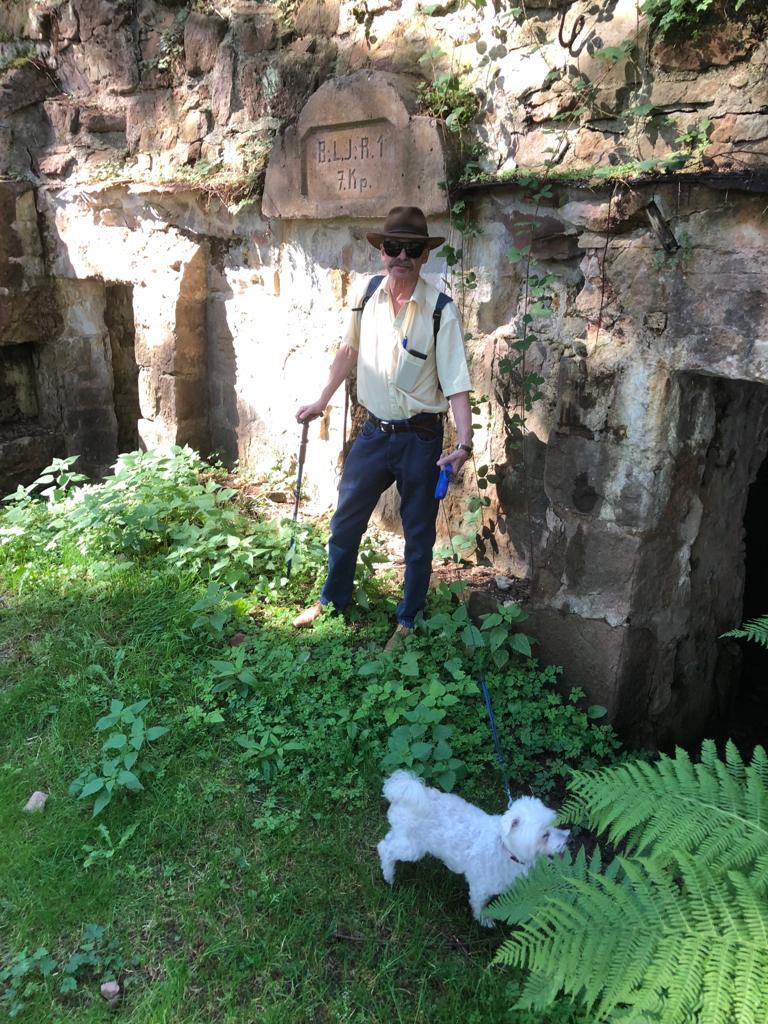
We leave the Command Post to climb the ridge further.
Along the road to the pass of le Collet du Linge: an elephant shelter and entrance to a filled in dug-out.
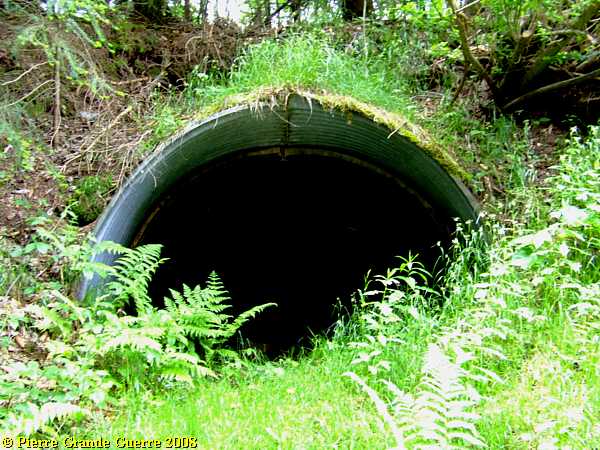
From the road of the Collet du Linge and behind the 5e B.C.P. stèle we follow a narrow path upward .

The path through the wood leads upward to the summit of the Schratzmännele .

Be careful here, if you will follow my steps on the spot! Along the path and beyond there are a lot of deep holes. These holes could have been sniper's foxholes, mortar pits, or entrances to underground corridors to "Stollen"-caves.
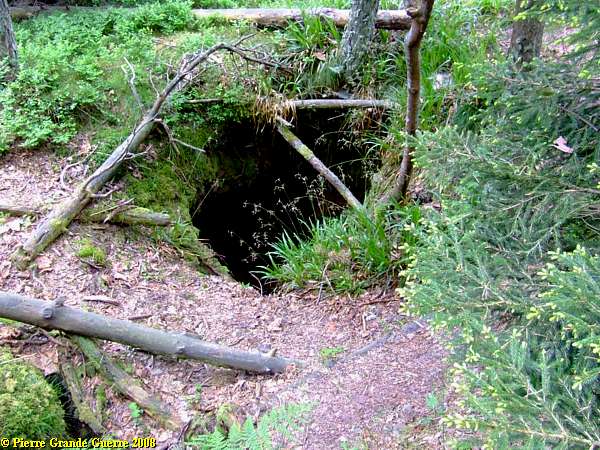
Near the summit, traces of steel bars stick out of the ground surface.
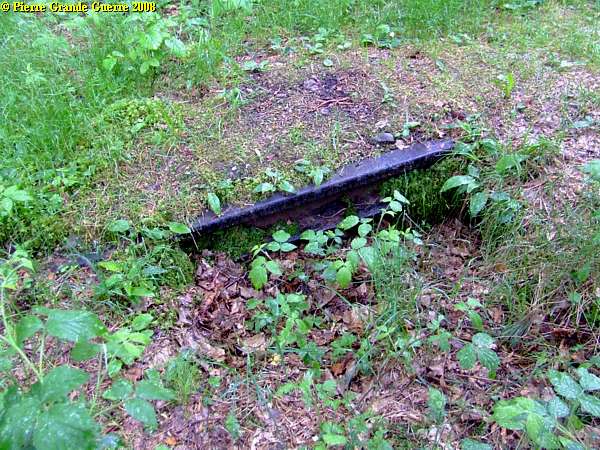
Chris's photo shows the top of the Schratzmännele (1045m.), overgrown with trees and a dense vegetation.

Again: meters deep holes, fortified with steel bars, or masonry.
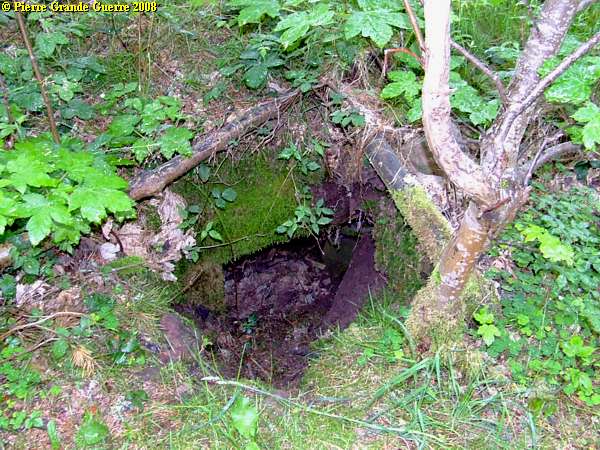
Just over the top we did find "La grande Carrière du Schratz", the large quarry of the Schratz.
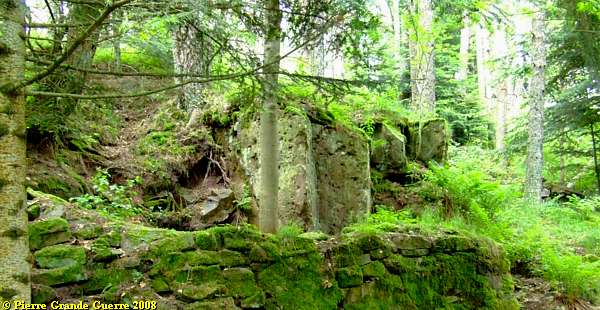
The 2nd. Bavarian Landwehr Regiment accommodated itself in this quarry during the Battle for the Lingekopf (20 July until 15 October 1915). The quarry was defended by two, well camouflaged, machine-gun nests, fortified with concrete.
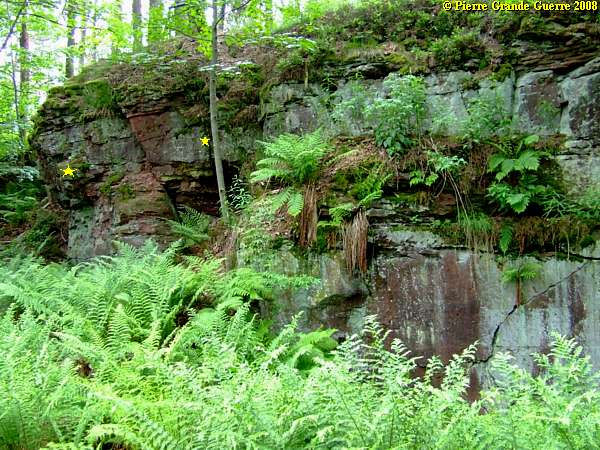
View from the position of the machine-gun bunkers.

One can still see the traces of a trench leading into one of the nowadays filled in entrances to the quarry. Besides giving shelter against French artillery fire, the quarry served also as an important supply station, and storage for materials.

We walk more downward on the south-east slope: ...
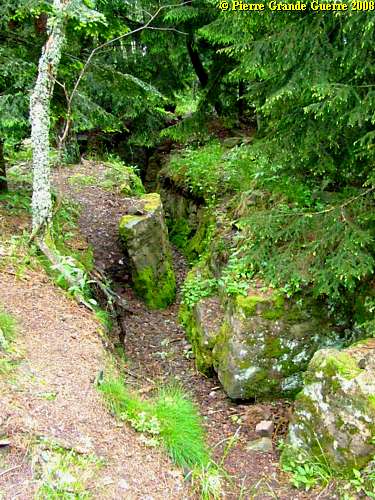
... traces of trenches.
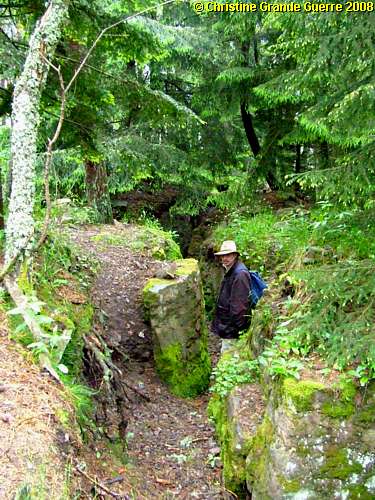
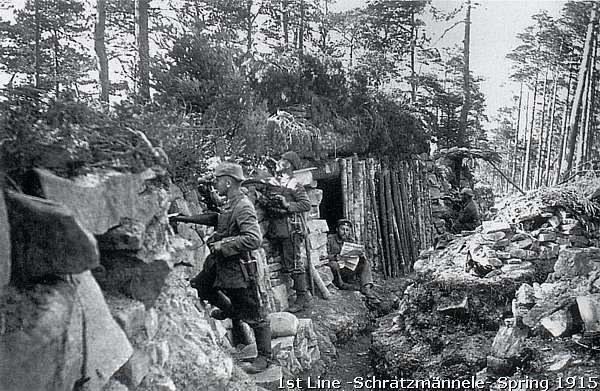
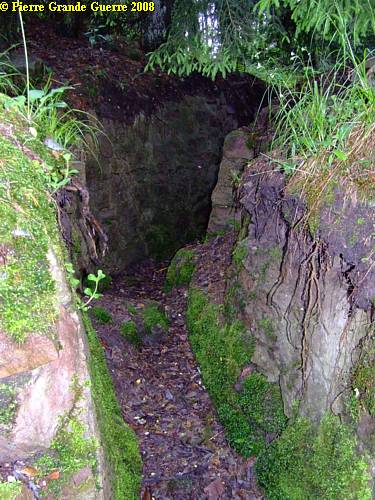
We walk further on along the path
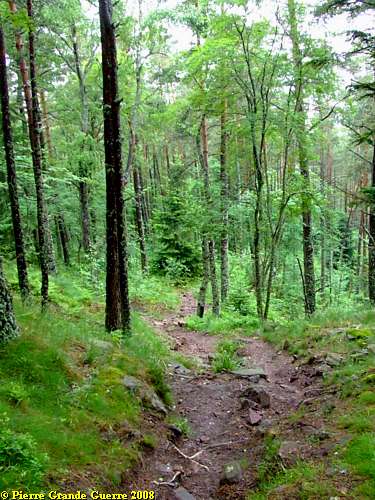
On the high ridge of the "Petite Carrière du Schratz", the small quarry of the Schratz: two bunkers, some 50 m. away from each other. The first one: a double machine-gun bunker. Left: a parapet with rifle holes.
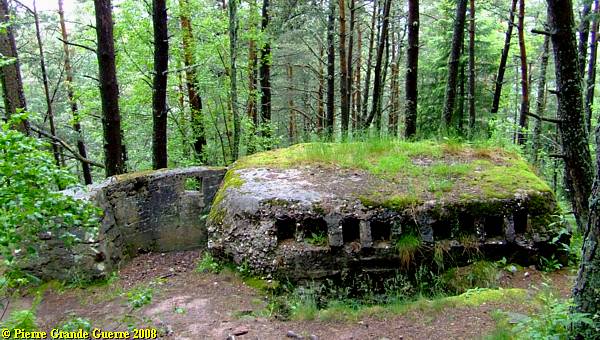
The rear side of the machine-gun bunker, with a filled in entrance.
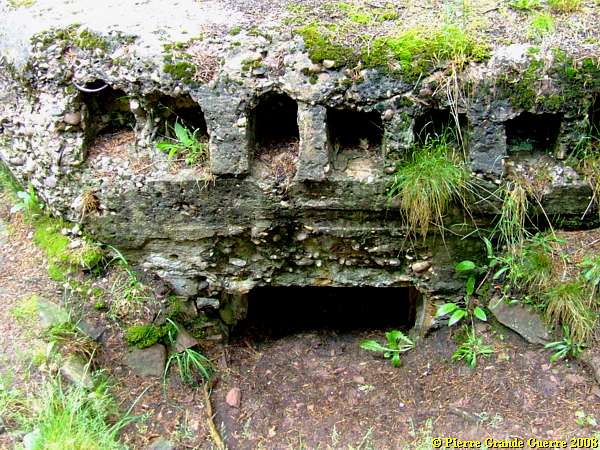
Taking the risk of falling down, I managed to photograph the front of the machine-gun bunker.
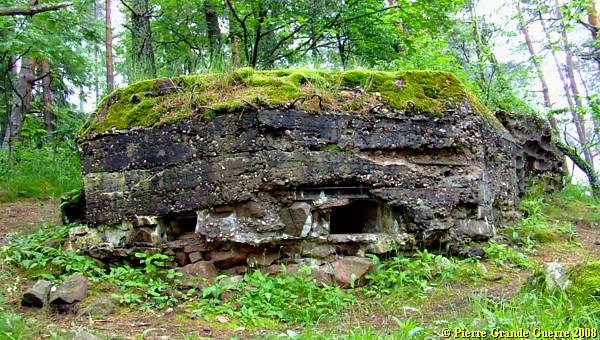
In the distance it is hard to detect the second bunker; an observation post.
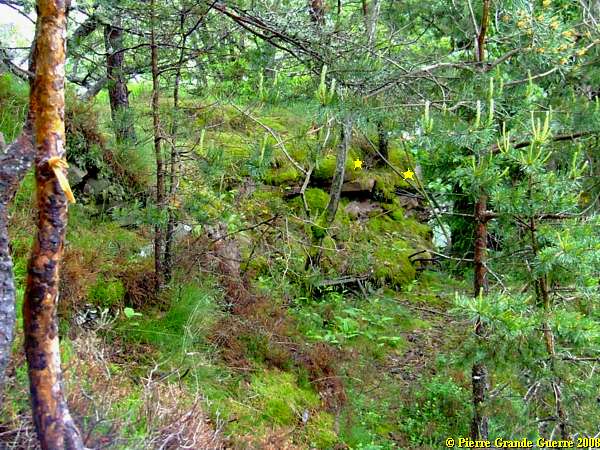
The entrance to the O.P. bunker.

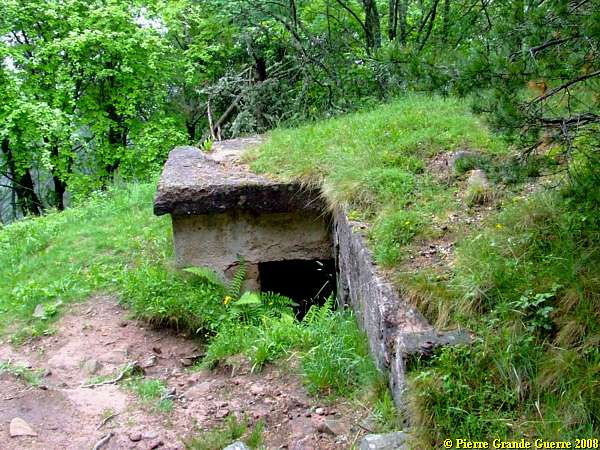
This time I could go inside the bunker.
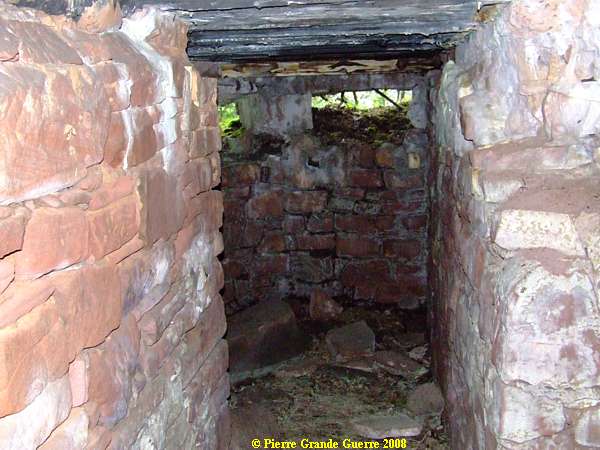
The bunker has one small, side room, ...
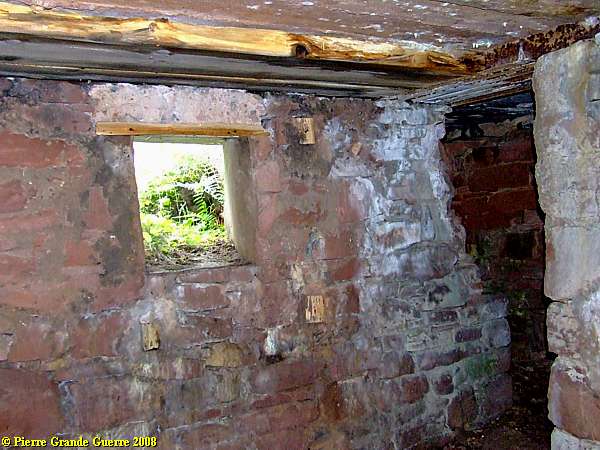
... but the main room has 3 observation windows, overlooking the quarry below.

Remember this bunker for later on.
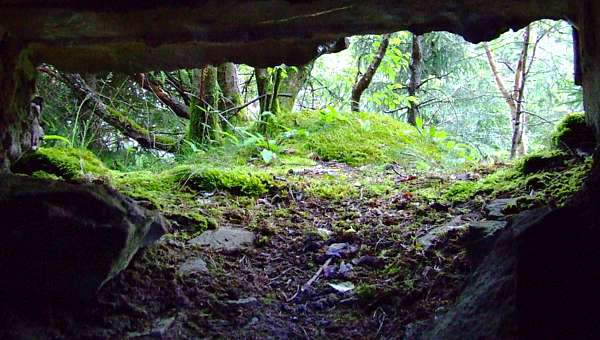
Before the massive introduction of concrete in 1916, the Germans in the Vosges also constructed their fortifications with natural materials, like tree trunks, masoned stones, and of course steel bars.
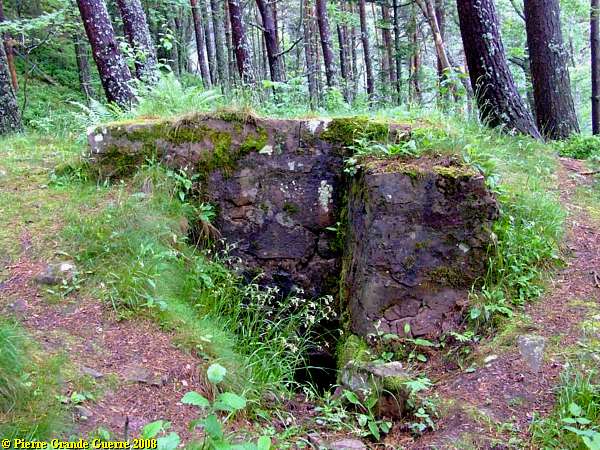
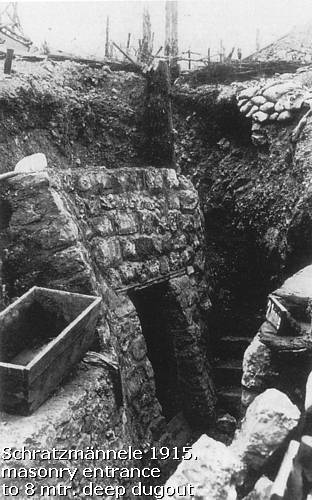
From here descend along a very steep path into "La petite Carrière du Schratz", the small quarry of the Schratz.
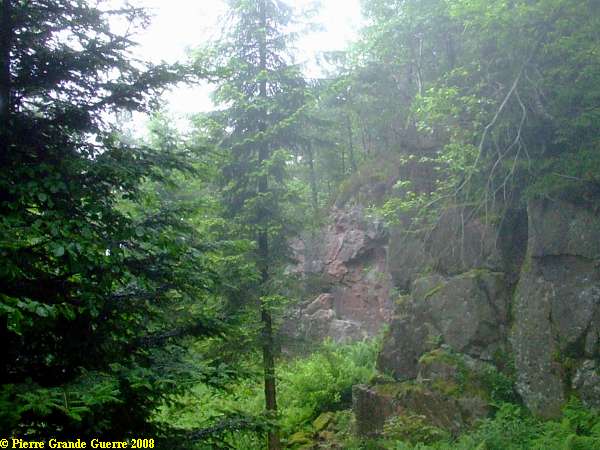
From the "bottom" of the quarry it is difficult to detect the observation post Bunker.
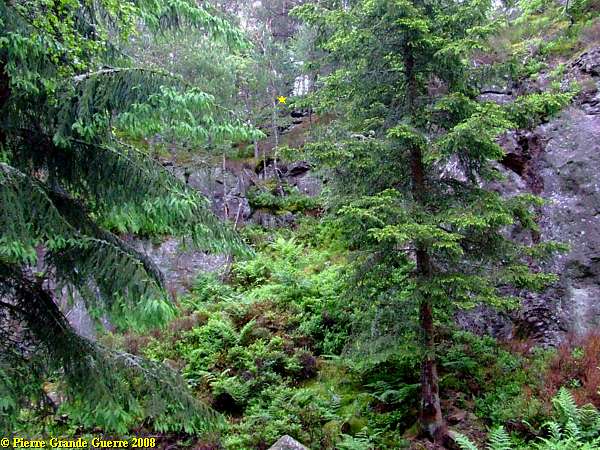
The 15th Bataillon Chasseurs à Pied - 27-29 July 1915
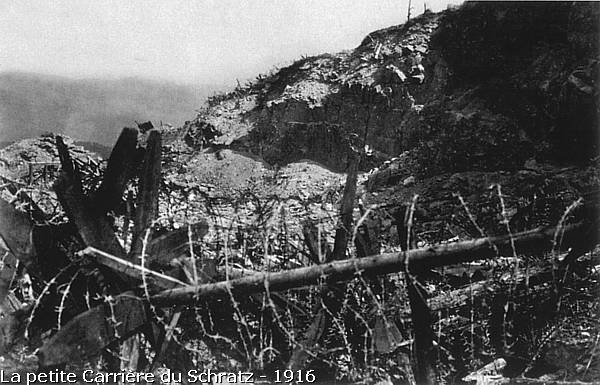
During the period of 27-29 July 1915, the 15e Bataillon Chasseurs à Pied tried
several times to conquer the quarry. At dawn of the 29th, "after an impact of a 75 mm. shell", the 15e Bataillon Chasseurs à Pied climbed their way up under fire, and captured the quarry and it's formidable ridge. But later again there would be many fights for the Schratzmännele and the Lingekopf until 13 October 1915.
After the 13th October the Germans kept their control over the summits.

The mark points out the masonry dug-out entrance, which we have been visiting before.
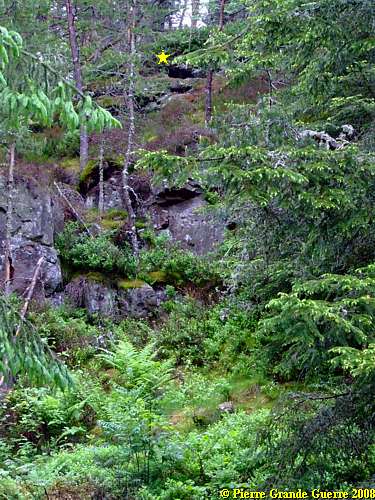
From here we return to the 5th B.C.P. Memorial, and cross the road on foot to the eastern side, to visit the so nearby trenches of the Collet du Linge.
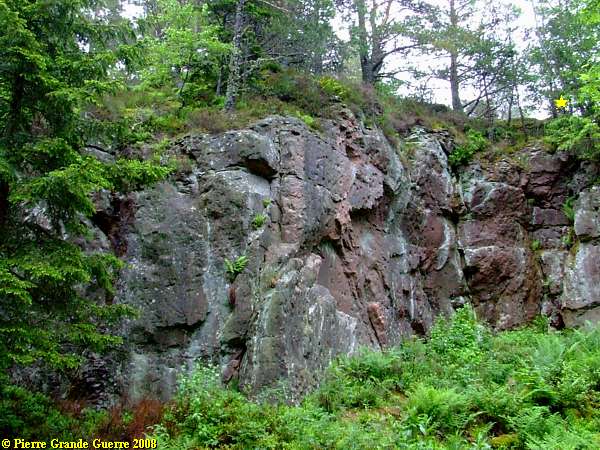
Continue to : " Lingekopf - le Linge "










